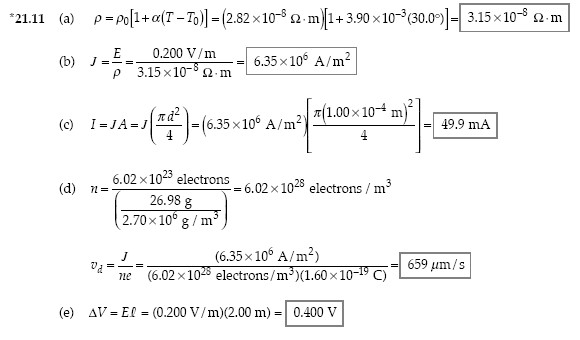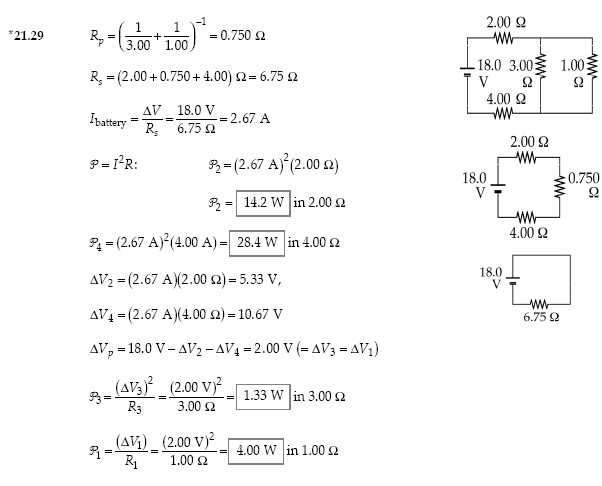Questions
Q21.3 A conductor is not in electrostatic equilibrium when it is carrying a current, duh! If charges are placed
on an isolated conductor, the electric fields established in the conductor by the charges will cause the
charges to move until they are in positions such that there is zero electric field throughout the
conductor. A conductor carrying a steady current is not an isolated conductor—its ends must be
connected to a source of emf, such as a battery. The battery maintains a potential difference across the
conductor and, therefore, an electric field in the conductor. The steady current is due to the response
of the electrons in the conductor due to this constant electric field.
Q21.8 Because there are so many electrons in a conductor (approximately 10^28 electrons/m^3) the average
velocity of charges is very slow. When you connect a wire to a potential difference, you establish an
electric field everywhere in the wire nearly instantaneously, to make electrons start drifting all at once.
Q21.10 One ampere–hour is 3600 coulombs. The ampere–hour rating is the quantity of charge that the battery
can lift though its nominal potential difference.
Q21.18 The bulbs of set A are wired in parallel. The bulbs of set B are wired in series, so removing one bulb
produces an open circuit with infinite resistance and zero current.
Q21.20 Kirchhoff’s junction rule expresses conservation of electric charge. If the total current into a point were
different from the total current out, then charge would be continuously created or annihilated at that
point. Kirchhoff’s loop rule expresses conservation of energy.
Q21.22 At their normal operating temperatures, from P = ∆V/R^2 , the bulb with the smallest power has the largest resistance. The
nominal 60 W lamp has greatest resistance. When they are connected in series, they all carry the same
small current. Here the highest–resistance bulb glows most brightly and the one with lowest resistance
is faintest because the high resistance bulb will have the greatest potential drop across it. This is just the reverse of their order of intensity if they were connected in parallel, as they
are designed to be.
Problems









